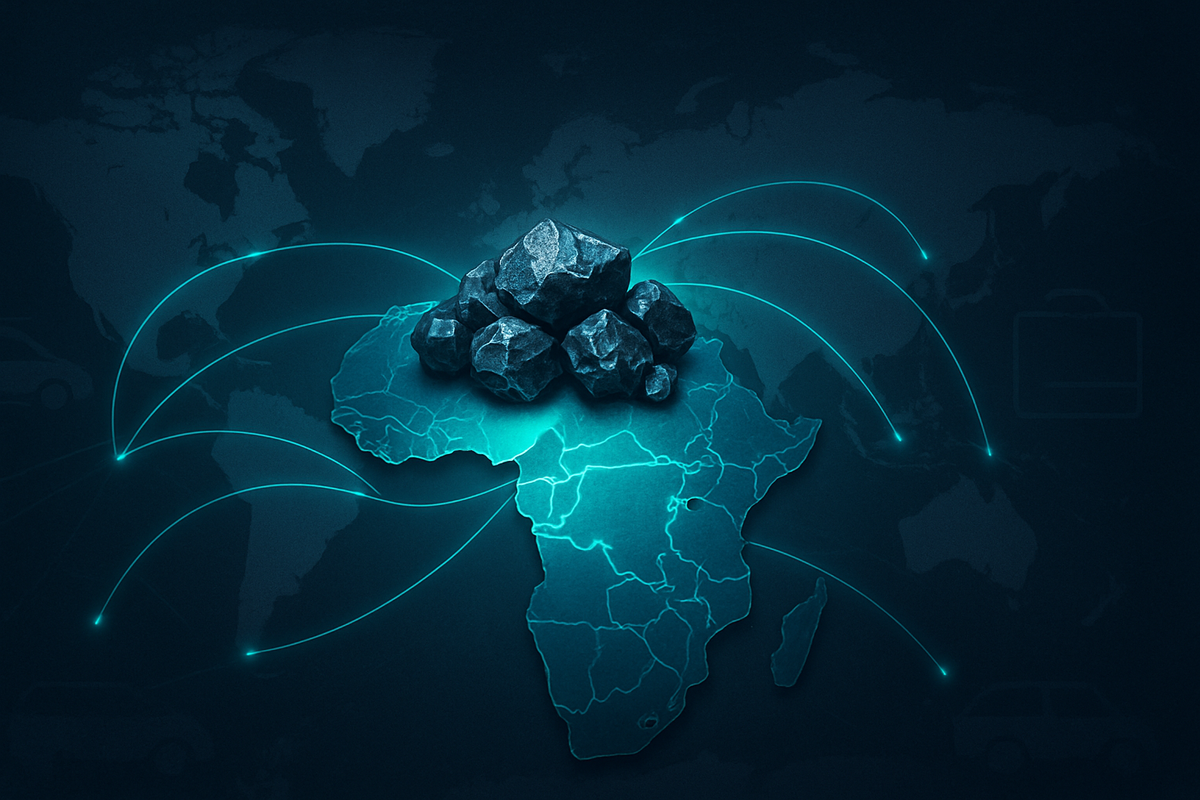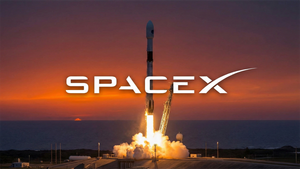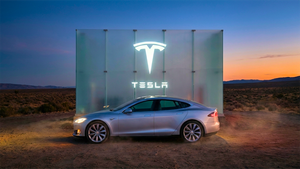
Kinshasa, DRC – October 24, 2025 – The Democratic Republic of Congo (DRC), the world's leading supplier of cobalt, has officially ushered in a transformative new era for the critical mineral market. On October 16, 2025, the DRC launched a comprehensive cobalt export framework, replacing a seven-month export ban with a structured quota system. This audacious move is poised to fundamentally overhaul global supply chains, inject sustained volatility into cobalt prices, and compel electric vehicle (EV) manufacturers worldwide to rapidly recalibrate their battery strategies.
The new framework, a decisive step towards asserting greater national control over a strategic resource, immediately signals tighter supply conditions. With export volumes significantly curtailed compared to pre-ban levels, the global scramble for cobalt—a vital component in lithium-ion batteries—is intensifying. This policy shift underscores a growing trend of resource nationalism, where nations rich in critical minerals are leveraging their geological endowments to secure economic benefits and influence global industrial trajectories.
A New Era of Resource Control: Details, Timeline, and Market Reactions
The DRC's new cobalt export framework is a meticulously planned regulatory intervention designed to stabilize prices, combat illicit mining, and maximize state revenues from its vast mineral wealth. This system emerged after a tumultuous period in the cobalt market.
The journey to this new framework began in February 2025, when the DRC initially imposed a complete halt on cobalt exports. This drastic measure was a direct response to cobalt prices plummeting to a nine-year low, exacerbated by an oversupply in the market. The ban, initially set for four months, was extended in June 2025, leading to force majeure declarations from major producers. Throughout this period, the market witnessed a dramatic rebound in cobalt prices, demonstrating the DRC's unparalleled leverage. By September 2025, the Authority for the Regulation and Control of Strategic Mineral Substances' Markets (ARECOMS), the state minerals regulator, announced the impending shift to a quota system. Finally, on October 16, 2025, the new framework officially took effect.
Under the new system, ARECOMS holds sole authority over issuing, allocating, and revoking export permissions. Quotas are determined on a pro-rata basis, considering historical export volumes from January 2022 to December 2024, a mechanism that inherently favors established operators. For the remainder of October 2025, a limited allocation of 3,625 tonnes was permitted. From November 2025 through December 2026, standardized monthly quotas of 7,250 tonnes will be enforced, culminating in an annual total of 96,600 tonnes. An identical annual cap is set for 2027. Critically, these volumes represent approximately half of the DRC's typical monthly export volumes prior to the restrictions, creating an immediate structural supply constraint. A "strategic quota" of 9,600 tonnes for 2026, representing 10% of future export volumes, is reserved for national strategic projects, with its distribution at ARECOMS's discretion. The framework also mandates comprehensive chain-of-custody documentation to ensure traceability and promote responsible sourcing, while explicitly excluding artisanal miners.
Initial market reactions have been swift and pronounced. The preceding export ban had already propelled cobalt hydroxide prices to an astonishing 245% increase, soaring from $5.65-5.75 per pound in February to $19.50-20.20 per pound by October 2025. This surge, reflecting market expectations of sustained supply tightness, is expected to maintain upward pressure on prices. While the framework aims to bring stability, the initial implementation has faced some procedural complexities as regulatory authorities work to establish administrative frameworks for quota distribution and monitoring. Shipping delays are also anticipated, with refinery inventories depleted during the ban, meaning shipments to major markets like China are not expected until January, indicating continued market tightness for several months.
Corporate Fortunes: Winners and Losers in the New Cobalt Landscape
The DRC's new cobalt export framework will inevitably create distinct winners and losers among public companies across the cobalt value chain, from miners to battery and electric vehicle manufacturers. The underlying dynamic is reduced global supply, leading to higher cobalt prices and fierce competition for available material.
CMOC Group (SSE: 603993, HKEX: 3993), the world's largest cobalt producer, finds itself in a challenging position. Despite producing 61,073 tonnes of cobalt in the first half of 2025, its export quota for 2026 is set at a mere 31,200 tonnes, representing only 27% of its total 2024 production. This substantial mismatch between production capacity and permitted export volume will likely force CMOC to curtail production, stockpile significant amounts of cobalt, or seek alternative arrangements, directly impacting its revenue and profitability. CMOC's aggressive expansion in recent years, particularly at its Kisanfu (KFM) project, contributed to the market oversupply that triggered the DRC's initial export ban. CMOC's CEO, Kenny Ives, has expressed concerns that sustained high cobalt prices risk "demand destruction and material substitution," highlighting a long-term vulnerability for the company.
In contrast, Glencore (LSE: GLEN), the world's second-largest cobalt producer and a significant operator in the DRC, appears to be in a relatively stronger position. Glencore's Mutanda Mining secured an allocation of 18,840 tonnes for 2026 and 3,925 tonnes for Q4 2025, totaling approximately 29% of the producer allocations. While its production (forecast at 42,000-45,000 tonnes for 2025) is also affected, Glencore had anticipated the restrictions, stockpiling production and declaring force majeure on some deliveries during the ban. The company projected no material financial impact for 2025 even without sales, indicating robust financial health and risk management. Glencore's diversified portfolio, including substantial copper production (of which cobalt is a byproduct), also provides a buffer against cobalt-specific restrictions. Companies with new cobalt mining projects that commenced production after the 2022-2024 reference period for quota allocation may also face significant hurdles in obtaining sufficient export permissions.
For battery manufacturers heavily reliant on nickel-cobalt-manganese (NCM) battery chemistries, the framework poses significant challenges. Companies like Volkswagen (FWB: VOW3), which faced a 110% increase in cobalt costs to $150.5 million, are particularly vulnerable to intensified cost pressures. Conversely, manufacturers focused on cobalt-free or reduced-cobalt battery technologies, such as lithium-iron-phosphate (LFP) batteries, stand to benefit. BYD (HKEX: 1211, SZSE: 002594), with its strong commitment to LFP technology, is strengthening its cost competitiveness in this new environment. Similarly, EV producers that have diversified their battery supply chains or invested in in-house battery manufacturing, including various chemistries, will be more resilient. Those heavily dependent on NCM batteries with less diversified supply chains, however, will likely face increased battery costs, potentially leading to higher vehicle prices and impacting sales.
Wider Significance: A Precedent for Resource Nationalism
The DRC's new cobalt export framework is far more than a mere adjustment to trade policy; it is a powerful statement of resource nationalism that resonates across the global critical minerals landscape. This move fits squarely within a broader industry trend where resource-rich nations are increasingly asserting sovereignty over their strategic mineral assets, aiming to maximize economic benefits and influence global supply chains.
The DRC's actions are driven by a desire for price stability, domestic value addition, and enhanced control over its substantial cobalt reserves. This strategy has already proven effective in pushing cobalt prices upward, a clear demonstration of the DRC's unparalleled leverage. The framework also emphasizes enhanced supply chain transparency and responsible sourcing, aligning with growing demands from major consuming markets in Europe and North America for ethical and environmentally sound mineral procurement.
The ripple effects extend throughout the entire supply chain. EV manufacturers and battery producers face unprecedented pressure to diversify their cobalt sourcing, accelerating investments in alternative technologies and exploring new mining regions like Australia, Canada, and Indonesia. For mining partners in the DRC, the quota system introduces a new layer of regulatory complexity. While established players like Glencore may navigate this, others, particularly those with rapidly expanding production like CMOC, face significant operational adjustments. The DRC's assertive stance could inspire similar resource nationalism in other critical mineral-rich countries, further reconfiguring global supply chains and potentially impacting the availability and cost of other essential materials. China, a major investor in DRC's mining infrastructure and a dominant force in cobalt processing, will also need to adapt to the DRC's evolving policy, which is actively seeking to diversify international partnerships.
Historically, the DRC's current strategy draws parallels to significant events in critical mineral markets. The most direct comparison is to the Organization of the Petroleum Exporting Countries (OPEC) and its historical control over global oil supplies, underscoring the DRC's near-monopoly on cobalt. Another salient precedent is China's strategic use of export controls on rare earth elements and other critical minerals (e.g., germanium, gallium, graphite) since the early 1990s. Beijing has consistently leveraged its rare earth dominance as a geopolitical tool, particularly in response to trade disputes. These historical examples highlight a long-standing pattern of nations asserting control over resources vital for strategic needs, a trend now vigorously reasserted by the DRC in the context of the rapidly expanding green energy transition.
What Comes Next: Adaptation and Strategic Shifts
The implementation of Congo's new cobalt export framework inaugurates a period of significant adaptation and strategic pivots across the global cobalt and EV industries. Both short-term adjustments and long-term transformations are inevitable.
In the short-term (2025-2026), sustained higher prices and increased volatility are expected as the market adjusts to structurally constrained supply. Global supply chains will experience immediate tightening, intensifying competition for available cobalt. Congolese mining companies will need to make crucial decisions regarding production levels and inventory management, potentially impacting copper production as cobalt is often a byproduct. The immediate emphasis on comprehensive supply chain transparency and ESG compliance will also push companies to enhance their traceability practices. Looking further ahead, long-term possibilities (beyond 2027) include sustained higher cobalt prices, incentivizing exploration and development of alternative sources globally. The DRC's long-term goal of domestic value addition could lead to the establishment of in-country refining facilities and special economic zones. This could also accelerate the diversification of supply chains away from the DRC and spur the development of cobalt-free battery technologies, potentially tempering long-term demand growth for primary cobalt.
Strategic pivots will be essential for survival and success. DRC-based mining companies must meticulously align their operations with the quota system, securing allocations and navigating the complex regulatory environment. This includes stringent compliance with financial, quality control, and traceability requirements, alongside potential investments in local processing. Global miners will accelerate exploration and development of non-DRC cobalt deposits to reduce geopolitical risk. Battery manufacturers will prioritize securing long-term contracts while simultaneously investing heavily in R&D for lower-cobalt or cobalt-free chemistries like LFP. They will also explore regional processing facilities and scale up battery recycling initiatives. EV producers, in turn, must work closely with battery suppliers to ensure diversified and secure cobalt supply, intensify efforts for ethical sourcing, and influence the transition towards alternative battery technologies to manage costs and mitigate supply risks.
Market opportunities will emerge in non-DRC cobalt mining, domestic processing investments within the DRC, and the growth of cobalt recycling technologies. Opportunities for strategic partnerships across the value chain will also be abundant. However, significant challenges loom, including potential supply shortages, price spikes, and regulatory uncertainty from ARECOMS. Increased costs for batteries could affect EV affordability, and geopolitical risks associated with the DRC's assertiveness and regional instability persist. The ongoing issue of artisanal mining, which remains largely unregulated, continues to pose challenges for ethical sourcing.
Potential scenarios range from a controlled stability and diversification (most likely), where the market gradually adapts to higher prices and diversified supply, to persistent shortages and price spikes (pessimistic), leading to severe deficits and slower EV adoption. An optimistic scenario for the DRC involves successful value chain integration, where the country significantly boosts domestic refining, leading to a two-tiered market for raw and refined cobalt.
The Road Ahead: Navigating a Transformed Market
The DRC's new cobalt export framework represents a watershed moment for the global cobalt market and the burgeoning electric vehicle industry. It underscores a fundamental shift in critical minerals governance, emphasizing resource nationalism and the pursuit of greater domestic value. This policy will redefine market structures, likely leading to more stable, albeit higher, prices in the short to medium term. Its lasting impact could accelerate the development of alternative cobalt sources and push battery manufacturers to further diversify their chemistries, particularly for cost-sensitive applications.
The market is moving forward with an inherent tension between the DRC's strategic control and the global industry's need for stable, affordable supply. While the framework aims to bring order, the lack of immediate planning security due to potential adjustments or unclear communication could create challenges for mining companies.
Investors should closely monitor several key indicators in the coming months:
- Quota Compliance and Enforcement: Strict adherence to and enforcement of the quota system by the DRC government will signal its long-term resolve.
- Cobalt Price Dynamics: Observe how cobalt spot and contract prices react. Sustained high prices could accelerate innovation in cobalt-free battery technologies, while stabilization might indicate market adaptation.
- Producer Strategies: Monitor how major DRC operators like Glencore (LSE: GLEN) and CMOC Group (SSE: 603993, HKEX: 3993) adapt to the quota system. Look for announcements regarding production adjustments, inventory management, and long-term supply strategies.
- Alternative Supply Development: Track progress in non-DRC cobalt projects, particularly in Indonesia, Australia, and Canada, as increased supply from these regions could eventually temper the DRC's market influence.
- Battery Technology Evolution: Monitor advancements and adoption rates of cobalt-free or low-cobalt battery chemistries by major EV manufacturers.
- DRC Policy Adjustments: Be vigilant for any signals from ARECOMS regarding potential revisions or adjustments to the quota system, especially if prices become excessively high or if there are significant challenges in implementation.
- Geopolitical Landscape: Monitor broader geopolitical developments, including trade policies, tariffs on battery materials (e.g., US tariffs on Chinese battery components), and international relations involving the DRC and major consuming nations.
- Downstream Investments in DRC: Look for signs of the DRC's success in attracting investment in domestic refining and battery materials production, which would signal progress in its goal of increasing local value addition.
- Copper Prices: Given that cobalt is often a byproduct of copper mining, the trajectory of copper prices will also influence mining economics and, indirectly, cobalt supply.
The new framework introduces a period of increased uncertainty but also potentially higher profitability for those who can navigate the new landscape. Investors will need to balance the DRC's strategic initiatives with diversification strategies across geographies and value chains.
This content is intended for informational purposes only and is not financial advice






